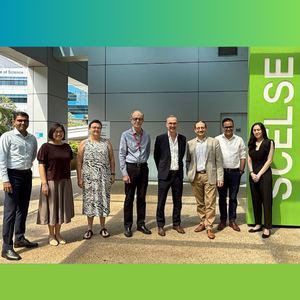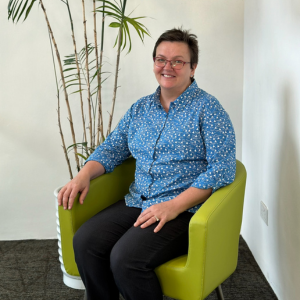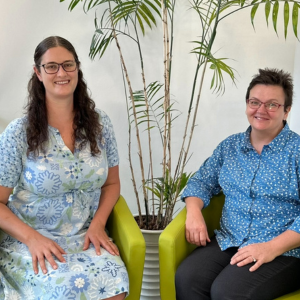- L’Oréal-SCELSE joint laboratory, Featured
- 17 Oct 2022
In order to conduct further research into the microbiomes of human skin and scalp, L’Oréal Singapore and NTU launched a new joint laboratory in September 2021. Hosted by the Singapore Centre for Environmental Life Sciences Engineering (SCELSE) and located on campus grounds, the L’Oréal-SCELSE laboratory investigates the possible applications of microbes in cosmetics and dermatology. This collaboration between NTU and L’Oréal showcases the university’s efforts that are a part of its 2025 strategic plan to translate knowledge into meaningful enterprises that benefit industry and society.
As the world’s largest cosmetics company, the L’Oréal Groupe has many brands under its vast umbrella, including Garnier, Kiehl’s and Maybelline. Many of us have seen the advertisements promoting their products (make-up, skin care, sun protection etc.), but how much do we really know of the research and the scientists behind these products?
We had a chance to speak to Muhammad Hasif Abdul Halim, a biological sciences student and CN Yang scholar, who has embarked on a research attachment at the L’Oréal-SCELSE laboratory. We discovered what it is like to work in a research laboratory that is part of the global personal care industry.
1. What were your initial thoughts when you first heard about the joint L’Oréal-SCELSE lab?
I thought that it was really cool that a major brand name is working with SCELSE. It feels even more real, that research output generated at SCELSE is being used directly in the industry.
2. Why did you want to join the L’Oréal-SCELSE lab?
I had recently taken an interest in skincare, particularly how different products and chemicals are used to keep your skin healthy. When I learnt that the lab was researching on how bacteria and biofilms affect the skin, I jumped at the opportunity. I thought that it would be a great opportunity to peer into what it is like to do research that is tied so close with a major brand. SCELSE is also known to have a world-class lab and scientists. It would be a great opportunity to learn from the best in the best environment possible.
3. How did you get the chance for a research attachment with the lab? What was the application process like?
Under the CN Yang Scholars’ Programme, I am granted the opportunity to undergo several research attachments as part of its core curriculum. As my passion lies in microbiology, I looked out for labs specialising in that field. I sought advice from one of my teaching assistants, Samantha, on potential labs that I could join, and she recommended this lab as a possible choice. I thought that the research focus was very interesting, so I immediately sent an email to the Principal Investigator. After a short meeting with members of the lab, I was accepted!
4. How do you feel now about being able to work in the L’Oréal-SCELSE lab?
I am so thankful for this opportunity while being so proud of being able to do so. I have learnt so much about research and about myself throughout this experience. It feels surreal to know that your work may perhaps one day be a part of something that could be incorporated into L’Oréal’s products.
5. Could you tell us a little about what you are currently working on in the lab?
I study how a balanced community of bacteria living on the human skin can keep our skin healthy. More specifically, I study how different host and environmental factors affect the biofilm formation of the skin microbes.
6. What’s a typical day like in the lab?
It starts after my classes end. I meet my mentor, research associate and PhD student, Samantha Quah, discuss about what we need to do for the day, then begin to prep for and the experiments for the day. I typically spend between 3 to 6 hours in the lab. My experiments typically include growing biofilms, quantifying them by crystal violet, counting colony forming units (CFU)s, ribonucleic acid (RNA) extractions, and confocal microscopy.
7. What challenges have you faced so far during your attachment and how were you able to overcome them or learn from them?
I am still very inexperienced in executing experimental techniques, and I make many mistakes along the way, which may delay the project a little, especially in the beginning. There are so many things to learn, and I am still learning so much with help from Samantha and principal research fellow and deputy research director of L’Oréal-SCELSE joint lab, Dr Viduthalai Rasheedkhan Regina, along with other members of the lab.
8. What are your plans once you graduate?
I plan to continue doing research related to microbiology in a cosmetics/biotech or pharmaceutical company, or pursue a PhD in microbiology.
9. What advice would you have for new students coming into study biological sciences and/or those who wish to get a chance to work in a research lab?
Do not be afraid to try and to ask. You may feel as though you do not know enough about the field to be doing research, but do not let that deter you from trying. Most professors are also very welcoming to undergraduates to do an attachment in their labs. All you have to do is ask!









